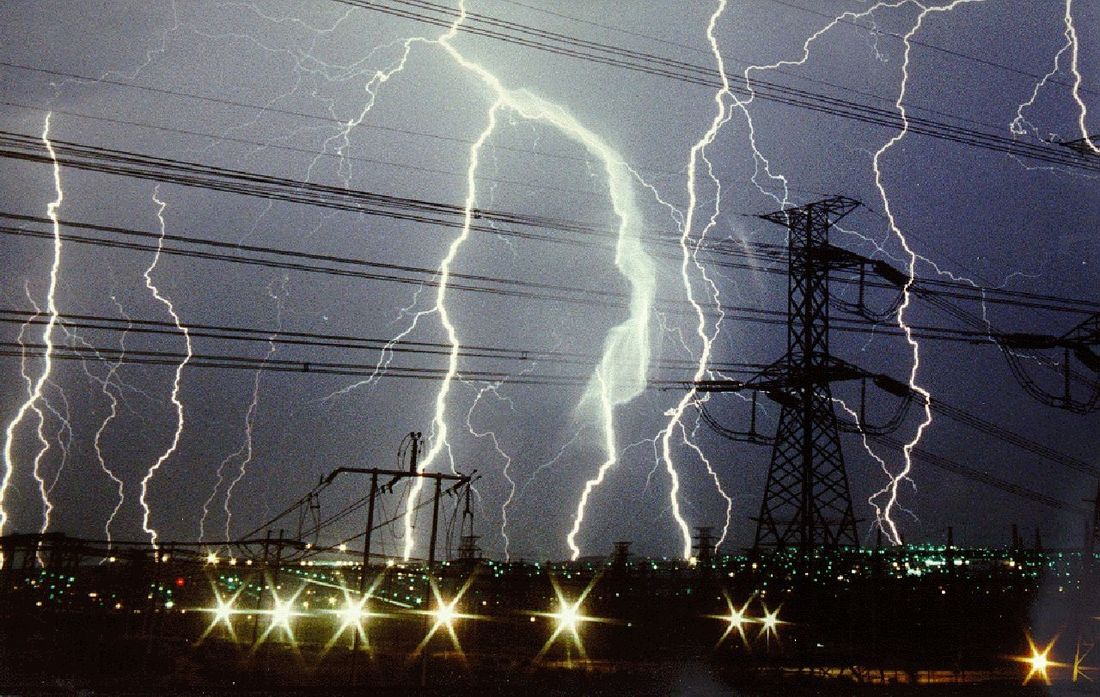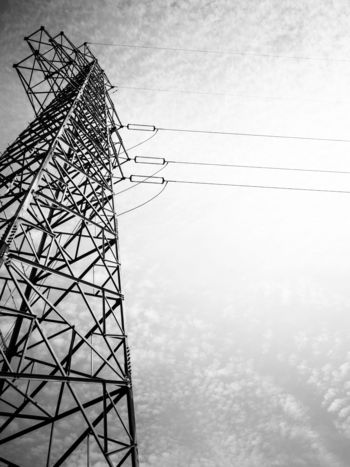Procedures for Estimating the Lightning Performance of Transmission Lines – New Aspects and Guide to procedures for estimating the lightning performance of transmission lines
Lightning remains one of the main causes of outages on transmission lines even though it has been studied extensively since the beginnings of power transmission. Over the years several approaches have been formalized to aid engineers in optimizing line designs for lightning performance.
Convenor
(NL)
C.S. ENGELBRECHT
Secretary
(NL)
I. TANNEMAAT
B. BESKE (US), W. CHISHOLM (CA), M-T. CORREIA DE BARROS (PT), G. DIENDORFER (AT), M. HANNIG (DE), F. H. SILVEIRA (BR), J.L. HE (CN), M. MIKI (JP), S. PACK (AT), T. SHINDO (JP), S. VISACRO (BR), R. ZENG (CN), M. ISHII (JP), J. LUNDQUIST (SE), I. MOHAMED RAWI (MY), P. MIKROPOULOS (GR), MOHD ZAINAL ABIDIN AB-KADIR (MY), C.A. NUCCI (IT), S. OKABE (JP), S. PODKORITNIK (SI), D. PROCTOR (US), F. RIZK (CA), U. SCHMIDT (DE), L. SCHWALT (AT)
Background
Important landmarks in the development of procedures for estimating the lightning performance of transmission lines are:
- 1950: The basic principles for calculating the lightning performance of transmission lines are introduced by the AIEE.
- 1982: Publication of a simplified method for hand or programmable calculators by EPRI.
- 1985-1997: Adoption and refinement of the EPRI simplified method by the IEEE which has subsequently been published as the IEEE standard 1243 and has been implemented as an open-source software tool, IEEE-Flash.
- 1991: Publication of the CIGRE brochure 63 “Guide to procedures for estimating the lightning performance of transmission lines”.
- 1999: Publication of the book “Insulation coordination for power systems”, by A.R. Hileman providing details and background information on the simplified methods proposed within CIGRE and the IEEE.
The principles and procedures introduced in these references are now well established, but there is need for an update to benefit from the latest lightning research and computational techniques.
Many countries have now access to detailed information about lightning activity from lightning location systems (LLS). Such systems have seen continual development in terms of detection efficiency, location accuracy, classification accuracy and lightning peak current estimates.
Significant new research has been done to understand the attachment process of lightning flashes to structures. This enables improved estimates of how many lightning flashes will hit a line and it also allows for a better placement of lightning shielding air terminals or conductors to reduce the number of direct lightning flashes to phase conductors. Furthermore, video evidence of lightning flashes to overhead lines and towers suggests that commonly used shielding calculation methods, such as the Electro-Geometric Method (EGM) may fail to accurately predict stroke attraction when upward leaders play a significant role in the attachment process, such as is the case for tall structures and Extra-High and Ultra-High Voltage conductors.

Advanced computational techniques, such as the Method of Moments (MoM) and Finite-Difference Time Domain (FDTD) formulations, are finding increasing use for calculating the electromagnetic transients (EMT) in power networks. These so-called Numerical Electromagnetic Analysis (NEA) methods, which rely on a direct numerical solution of Maxwell’s equations, allow for a more accurate simulation of the response to lightning strokes of relatively short structures with non-uniform parameters such as transmission line towers and ground electrodes. Results from these advanced techniques can now be used to develop improved high-frequency models of ground electrodes and tall transmission line tower for application in more widely available and computationally efficient circuit-based methods such as the various EMT program implementations.
Finally, modern PCs provide greatly improved computing power over those used in the 1990s, which allows for more sophisticated modelling of the interaction of lightning with lines, thereby reducing the need for simplified methods. This ability is especially needed when evaluating mitigation methods such as the use of line arresters.
Scope
This TB complements and update CIGRE Technical Brochure 063 “Guide to procedures for estimating the lightning performance of transmission lines”, by modernizing the information and by describing the latest techniques and assumptions used to calculate the lightning outage performance of overhead transmission lines. In addition, application examples are included to serve as benchmarks.
Approach
CIGRE Technical Brochure 063, published in 1991, is a comprehensive document still used by many as a basis for performing lightning performance calculations. Importantly, it is recognized that most of the information contained in this brochure is still relevant and applicable. The new Brochure serves, therefore, as compliment to TB 063, to present new or updated aspects. TB 063 is also republished in the new CIGRE format as a companion document.
Since TB 063, CIGRE has published several important reference works which form the basis for the new TB:
- No. 072 Guidelines for the evaluation of the dielectric strength of external insulation,
- No. 376 Cloud-to-Ground Lightning Parameters derived from Lightning Location Systems. The Effects of System Performance,
- No. 440 Use of Surge Arresters for Lightning Protection of Transmission Lines,
- No. 549 Lightning Parameters for Engineering Applications,
- No. 704 Evaluation of lightning shielding analysis methods for EHV and UHV DC and AC transmission lines,
- No. 781 Impact of soil-parameter frequency dependence on the response of grounding electrodes and on the lightning performance of electrical systems,
- No. 785 Electromagnetic computation methods for lightning surge studies with emphasis on the FDTD method,
Relevant information from these brochures were distilled and applied to produce updated recommendations and guidelines.
Work was done to propose a practical alternative to the presently used Electro-Geometric Method (EGM), to address the main criticism that it becomes unreliable when upward leaders play a significant role in the attachment process as is the case for EHV and UHV lines. A further motivation for this development is the fact that more physically reasonable models, such as those loosely grouped under the term “Leader Progression Models” (LPM), are less likely to be used for generalized lightning performance calculations because they are computationally intensive.
Overview of the brochure
In Chapter 2 the physical characteristics and development of a lightning flash is described as it pertains to the performance of lines. It also introduces the basic assumptions and methodology used to calculate the lightning performance of overhead transmission lines.
Chapter 3 provides a summary of lightning observation techniques, together with pertinent characteristics related to frequency and severity of lightning events that are useful for calculating the outage rate of lines. It summarizes previous CIGRE and IEEE reference documents which should be consulted for more details on the state of the art and background information.
Lightning stroke attraction models are discussed in Chapter 4. These are used to calculate lightning incidence to transmission lines and to design the shielding arrangements to protect phase conductors from direct strikes. A new simplified procedure based on the Rizk lightning attachment model is proposed as an alternative to the presently used Electro-Geometric Method, to improve the prediction of lightning incidence when upward leaders play a significant role in the attachment process.
An overview of modelling concepts is included in Chapter 5 with a view of providing guidance when using high-frequency circuit-based models for calculating the lightning overvoltages on overhead lines. This chapter is written as a complement to Chapter 5 of TB 63, therefore only focusing on recent developments in representing the lightning stroke, transmission line towers, the frequency dependence of ground electrodes and the modelling of insulator flashover. The chapter closes with specific guidance in developing models for the calculation of backflashover.
This brochure closes with Chapter 6, where proposals for future research needs are listed.
Several appendixes are attached to this brochure that provide supporting material:
- Appendix A lists the abbreviations and variables used in this document.
- Appendix B provides a summary of the parameters of negative downward stroke current as obtained through direct measurements on short structures.
- Appendix C gives the analytical description for representing the wave shape of first and subsequent return strokes in time domain simulations. Both the CIGRE and double peaked first stroke current waveshapes are explained.
- Appendix D describes two methods to calculate lightning incidence to transmission lines. The first is the modified Electro-Geometric Method as applied in Japan and the second is the proposed simplified implementation of the Rizk lightning attachment model.
Suggestions for further work
Important input in this regard is studies where the calculated outage rates is benchmarked against the long-term average outage rates from lines that have been in service for a long time.
An important contribution in this document is the proposed simplified lightning attachment model, developed by Rizk. The WG has made a start in validating this method, but further benchmarking is still required.
Another aspect that requires further investigation is to improve the recommendations regarding the characteristics of first and subsequent strokes and specifically for those of positive polarity. relevant to transmission lines. In this regard, it will be important to obtain more data from direct measurements on short, grounded structures that resemble transmission line towers.
The performance calculation methodology presented in this brochure still contains many simplifications which are often represented by correction factors. Further studies are required to provide more detailed guidance on selecting appropriate values for these factors.
Further development of improved modelling techniques for determining the performance of more complex configurations (such as multi-circuit lines) and to assess the efficiency of the remedial measures (such as line arresters) is needed as well as investigations into the efficiency and feasibility of novel mitigation measures such as under-built earth wires.



